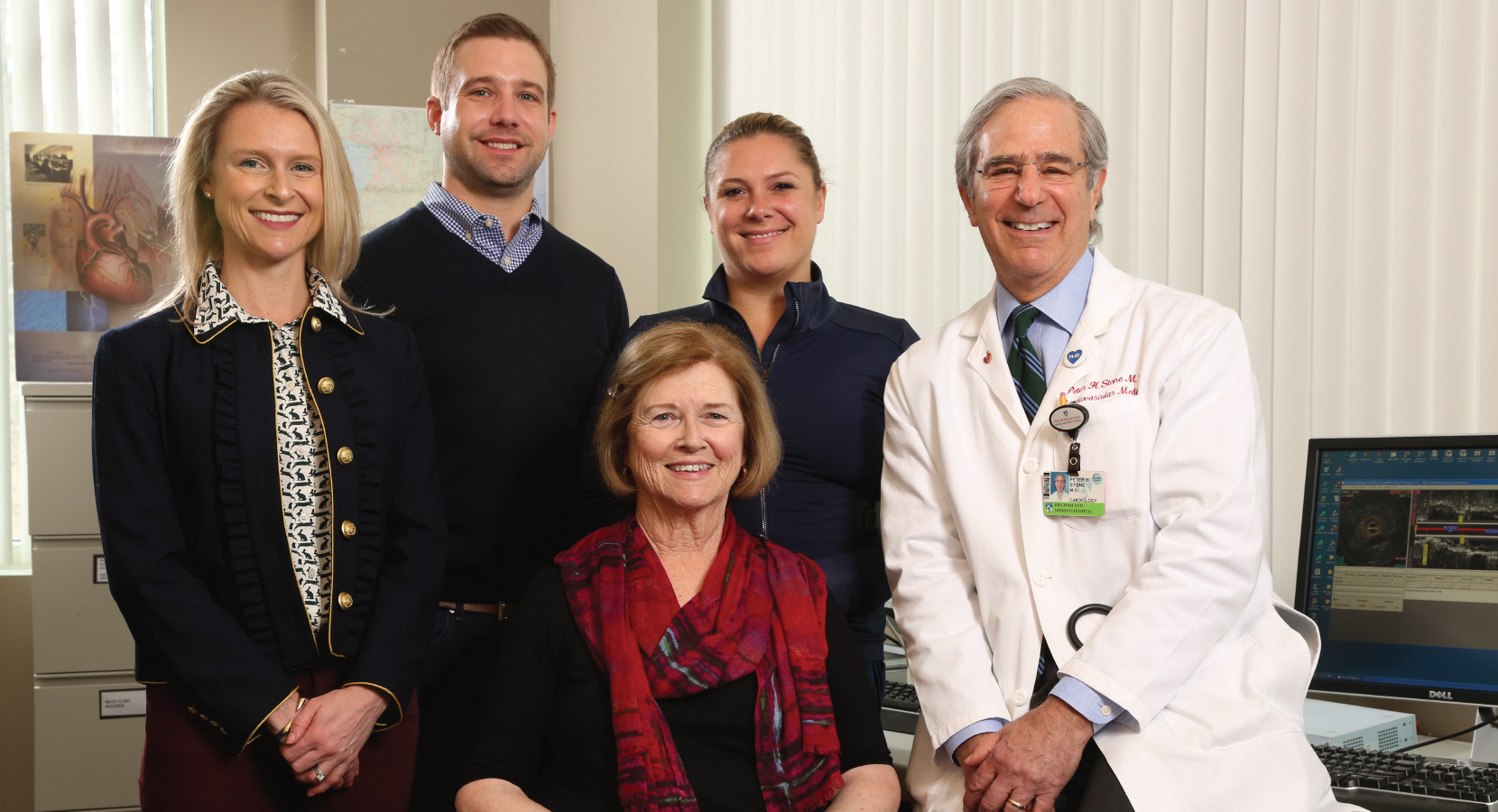
Schauberts Advance Heart Disease Screening
Each year, approximately 1.5 million people in the United States suffer heart attacks—with nearly one-third of them being fatal.
Using sophisticated computer techniques, Peter Stone, MD, and his research colleagues at Brigham and Women’s Hospital have figured out how to pinpoint which area of an artery is at highest risk of causing a heart attack.
One of Stone’s longtime patients, Steve Schaubert, saw the vast potential to translate this research to the clinic to predict and prevent cardiac problems. In 2015, he made a gift of $280,000 to support Stone’s work. Two weeks later, he passed away from sudden cardiac death.
“So many lives are shortened because of coronary heart disease,” says Stone, director of BWH’s Vascular Profiling Research Group. “Steve is our lab’s ongoing and major source of motivation. We’ve made incredible progress thanks to the support of him and his family.”
Recently, Steve’s wife and daughters renewed their support with another generous gift to Stone’s lab. “It’s an easy choice for us to contribute to this work,” says Steve’s wife, Eileen Schaubert. “Steve was instrumental in our family’s first gift, and seeing Dr. Stone’s progress is inspiring. His passion is contagious.”
“We have embarked on amazing new approaches using non-invasive imaging, which Steve had the foresight to suggest to us,” Stone says. “Imaging technology has changed dramatically, enabling us to improve our analysis of plaques in arteries and blood flow patterns. Our vision is for all cardiac catheterization labs to do these assessments, identify individuals at risk, and intervene with stents to prevent heart attacks.”
One of Steve’s daughters, Suzanne Schaubert Thornfeldt, says Stone’s research has given her family hope for the future of cardiac care.
“If a screening could show you have risk in a particular artery and a problem could be prevented, that is huge,” she says. “It would be possible to save lives around the world. Our family is honored to move this work forward.”